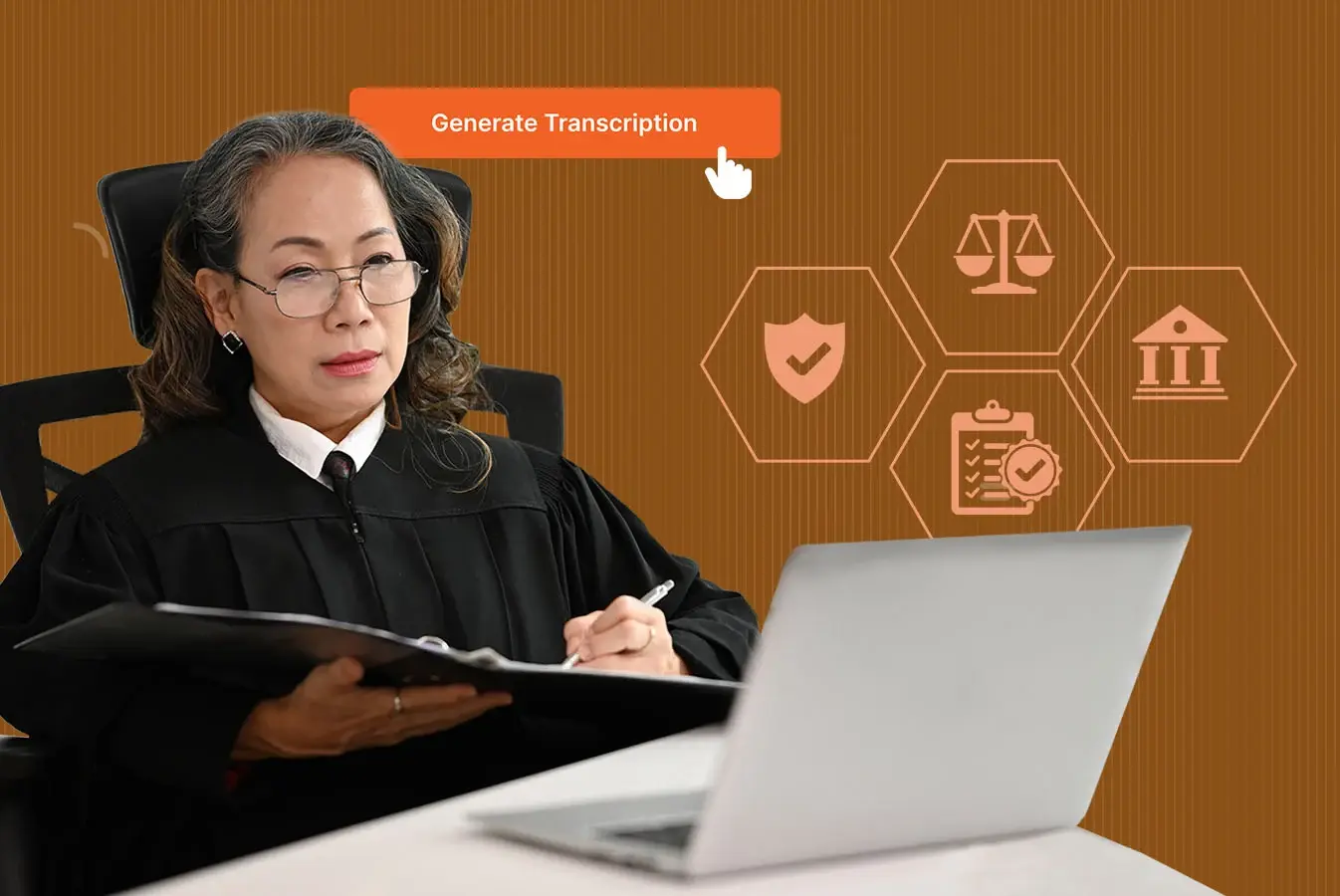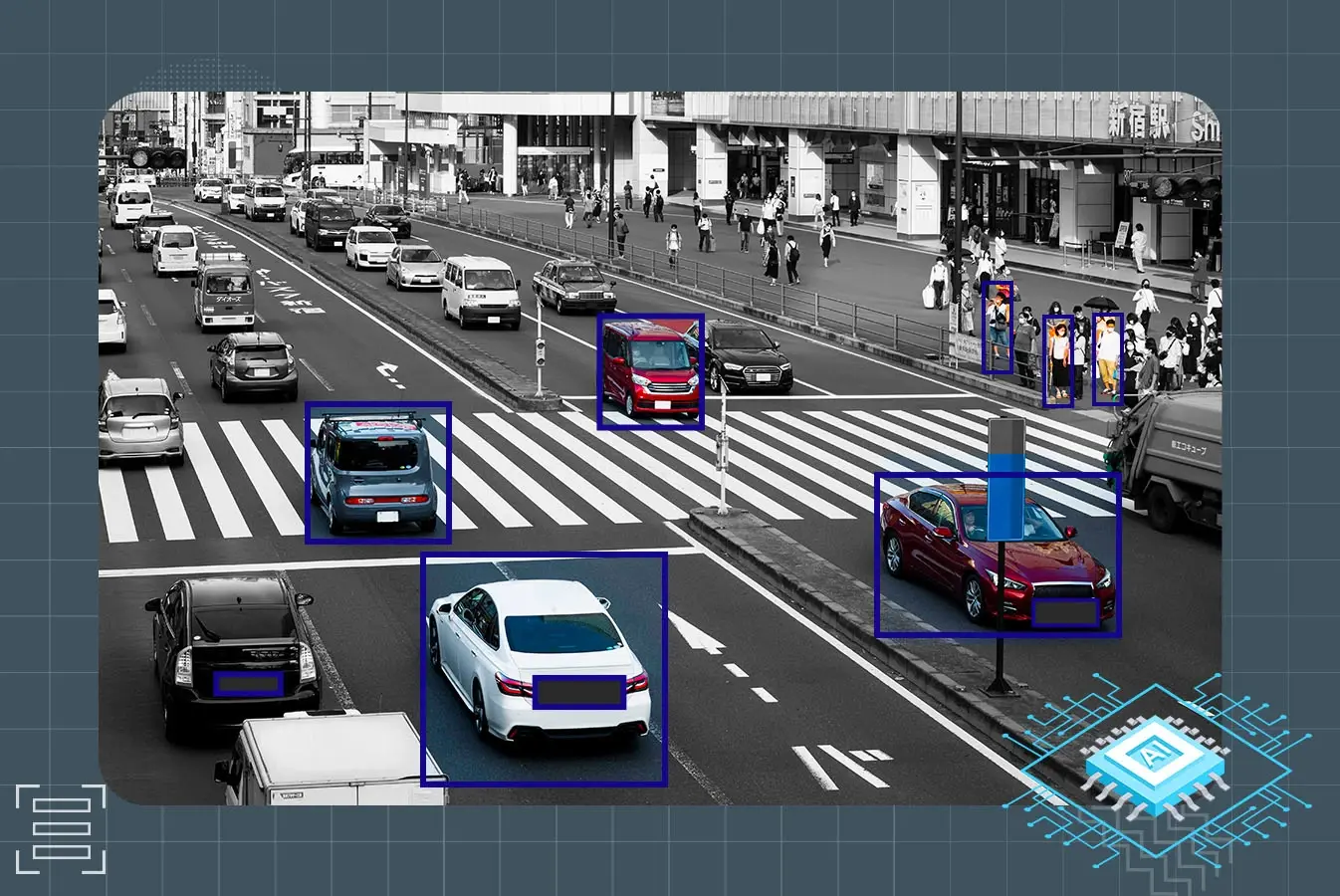AI-Powered Report Summarization and Generation Across Industries
by Sarim Suleman, Last updated: January 23, 2025, Code:

This blog explores the transformative impact of AI-powered report summarization and generation tools across industries, highlighting how they address the inefficiencies of manual reporting. By automating data analysis, improving accuracy, and enhancing decision-making, these tools streamline workflows and boost productivity. From finance to law enforcement, AI is reshaping how organizations manage data, reduce costs, and drive better outcomes.
Imagine sitting through hours of meetings, wading through countless pages of data, and painstakingly crafting detailed reports while racing against tight deadlines. For decision-makers across industries, this is the reality. The traditional, manual process of report generation is not just time-consuming; it’s a productivity sinkhole. Every minute spent on these repetitive tasks is a minute stolen from strategic initiatives that drive real value.
Additionally, manual reporting and summarization have further challenges. Errors creep in, accuracy suffers, and critical insights often get buried in a sea of information. The ripple effects of this inefficiency are far-reaching: delayed decisions, missed opportunities, strained budgets, and frustrated stakeholders left grappling with incomplete or outdated reports.
Now, add to this the growing complexity of modern data. Organizations today generate information from a myriad of sources including audio recordings, video footage, and sprawling datasets from various systems. Manually analyzing and summarizing this deluge of data is not just inefficient; it’s nearly impossible.
But what if there were a better way? A smarter, faster way to process data, extract key insights, and generate detailed reports without the manual drudgery? Enter AI-powered report summarization and report generation; a transformative solution designed to automate the entire process. These tools leverage advanced artificial intelligence technologies to deliver accurate, concise summaries and comprehensive reports in a fraction of the time it would take a human.
In this blog, we’ll explore how AI-powered tools are revolutionizing the way industries handle data and reporting. From tackling inefficiencies to delivering real-world benefits, we’ll dive deep into the problems they solve, the solutions they offer, and the impact they’re having across sectors. Whether you’re in finance, public works, healthcare, or law enforcement, this technology is reshaping how work gets done.
Why Manual Reporting is Inefficient
Manual reporting has been a mainstay in operations, but it can no longer keep up with today’s complex, data-driven demands. What once worked for simpler workflows now creates inefficiencies and hinders growth.
Modern organizations generate vast amounts of data from diverse sources like audio, video, and digital files. Manually extracting insights from this flood of information is labor-intensive, time-consuming, and redirects focus from strategic priorities.
Let’s break down the key reasons why manual reporting is no longer a viable solution in today’s fast-paced, data-centric world.
Time Consumption
Professionals across industries dedicate significant portions of their workweek to generating reports. This process often involves transcribing meeting notes, analyzing datasets, and drafting detailed summaries—tasks that are both time-consuming and labor-intensive. On average, transcribing one hour of audio can take up to four hours, and even a clear, slow, 15-minute audio file requires about an hour to transcribe.
However, reporting extends far beyond simple transcription. It involves processing audio and video data, analyzing its content, and converting it into concise, actionable summaries or reports. This multi-step process amplifies the time required, further straining resources and delaying critical decision-making. These inefficiencies not only waste valuable hours but also hinder productivity and prevent professionals from focusing on high-priority, strategic tasks.
Human Error and Inconsistency
Manual reporting is prone to errors, especially when the volume of data is high. From missed details to incorrect figures, even minor inaccuracies can have cascading effects. Studies reveal that manually entering data carries an error rate between 18% and 40%. Now, imagine the human error involved in analyzing that data. For example, a single mistake in financial forecasting could lead to significant budget mismanagement, while incorrect transcription in law enforcement could jeopardize the outcome of a case.
Missed Opportunities for Strategic Work
Time spent on repetitive reporting tasks could be better allocated to high-value initiatives like strategic planning, stakeholder engagement, and innovation. When professionals are bogged down with administrative tasks, they lack bandwidth for activities that directly drive organizational growth and impact.
Data Silos and Fragmentation
Another problem with manual reporting is its inability to consolidate data effectively. Information from disparate systems—spreadsheets, emails, and databases—often exists in silos, making it difficult to create comprehensive reports. This lack of cohesion results in incomplete insights and misinformed decisions.
How AI-Powered Summarization and Report Generation Solves Reporting Challenges
The inefficiencies of manual reporting are becoming increasingly untenable in today’s data-driven world as discussed above. AI-powered summarization and report generation tools offer a revolutionary alternative, automating the most time-consuming and error-prone aspects of the process. By leveraging advanced technologies such as natural language processing (NLP), machine learning (ML), optical character recognition (OCR), and computer vision, these tools enable organizations to generate accurate, insightful reports in record time.
Beyond automation, these tools are designed to be highly adaptable, integrating seamlessly into existing workflows and producing outputs tailored to industry-specific needs. Here’s a closer look at the key features that make AI-powered tools indispensable in tackling reporting challenges.
Advanced NLP and Machine Learning Capabilities
Modern AI tools are powered by cutting-edge models like LLAMA3.1, which excel in understanding, analyzing, and summarizing complex datasets. These technologies go beyond simply extracting information—they identify key themes, highlight actionable insights, and structure them into clear, cohesive narratives. Whether the source material is a multi-hour meeting transcript or a dense dataset, NLP ensures that the final summary is both accurate and meaningful.
AI also adapts to specialized terminologies and industry-specific contexts. For example, in law enforcement, it can recognize terms unique to incident reporting, while in healthcare, it can accurately interpret medical jargon to produce precise case summaries.
Seamless Integration
AI-powered tools are designed to work with the systems you already use. Through robust APIs, they integrate effortlessly with platforms like ERP systems, evidence management databases, project tracking tools, and more. This eliminates the need for redundant data entry and ensures that reporting workflows remain uninterrupted.
For example, a public works department using project management software can automate progress reporting by connecting it directly to an AI tool. Similarly, a finance department can use AI to pull data from ERP platforms for real-time financial analysis and report generation. This seamless integration saves time and reduces friction in adopting new technologies.
Customizable Outputs
One of the standout features of AI-driven tools is their ability to generate outputs tailored to specific needs. These tools allow organizations to create templates that align with departmental or industry standards, ensuring consistency and usability.
For instance, finance teams can produce compliance-ready budget summaries with detailed breakdowns, while public works departments can generate real-time updates on project milestones. Customizable templates mean reports not only meet professional standards but also save time by automating repetitive formatting and structuring tasks.
Scalability and Real-Time Analysis
The ability to process large datasets efficiently is a hallmark of AI-powered tools. Whether an organization is dealing with thousands of hours of video footage or a constant stream of meeting transcripts, these tools can scale to meet the demand.
Moreover, AI tools provide real-time analysis, which is particularly valuable in dynamic industries. For example, law enforcement agencies can generate immediate incident summaries from body camera footage, while healthcare providers can quickly create case reports during patient consultations. This capability ensures that decision-making is never delayed by slow reporting processes.
Industry-Specific Use Cases for AI-Powered Summarization and Report Generation
With the inclusion of such technology, AI-powered summarization and report generation tools have transformative applications across industries, addressing unique challenges and enhancing operational efficiency. Let’s explore how these tools are tailored to meet the demands of specific sectors.
Finance and Budget
Finance and budget departments handle vast amounts of data from ERP systems, financial forecasting tools, and expenditure-tracking platforms. Compiling this information manually for reports is both time-consuming and error-prone. AI-powered tools address these challenges by automating transcription, data analysis, and report generation, ensuring accuracy and adherence to departmental templates.
Additionally, AI tools analyze video recordings from training sessions, audio from budget meetings, and raw financial data to produce detailed financial reports and projections. This automation accelerates decision-making and minimizes human error, enabling departments to stay ahead of deadlines and ensure compliance.
Moreover, managing damage claims for vehicle crashes, infrastructure incidents, or public property damage often involves compiling critical details like liability assessments, repair costs, and witness statements. AI tools extract and summarize relevant evidence from police reports, work orders, and incident logs. This streamlines the reimbursement process, ensuring timely submission of claims and reducing budgetary strain caused by delays or disputes.
Public Works
Public works departments are responsible for managing complex projects, maintenance schedules, and community feedback. Generating progress reports and tracking resources manually often leads to inefficiencies and delays. AI-powered tools revolutionize these processes by automating data extraction and summarization.
AI tools analyze data from project management software, citizen feedback platforms, and video footage from construction sites. By summarizing this data into real-time updates and maintenance summaries, departments can optimize resource allocation and improve accountability.
Also, public works agencies frequently collaborate with contractors, external partners, and stakeholders. Meeting recordings and consultation notes often contain critical insights buried in lengthy files. AI-powered summarization extracts key action items and decisions, ensuring clear communication, timely follow-ups, and increased accountability across projects.
Law Enforcement
Law enforcement agencies rely on a multitude of data sources, including evidence management systems, surveillance footage, and incident reports. The manual process of compiling and analyzing this information can be overwhelming and prone to errors. AI-powered tools simplify these tasks while ensuring compliance and transparency.
By transcribing body camera footage, dispatch audio, and field notes, AI tools generate detailed police reports and incident summaries. Features like activity recognition and object detection enhance the accuracy of these reports, expediting case resolutions and reducing administrative burdens.
Automated reporting ensures that law enforcement agencies maintain transparency and comply with regulations. This fosters trust among communities and improves the overall efficiency of case management systems.
Healthcare
Healthcare providers and public health departments manage large volumes of patient data and community health information. Manually summarizing medical case details or public health trends is time-consuming and often results in missed opportunities for intervention. AI-powered tools streamline these processes by automating data analysis and report generation.
AI tools summarize patient records, case histories, and diagnostic data into clear, actionable reports. This enables healthcare providers to make informed decisions faster, improving patient outcomes.
Furthermore, public health departments benefit from AI’s ability to analyze community health data and generate reports on emerging trends. These insights enable proactive interventions, ensuring resources are allocated effectively to address health crises and improve overall public well-being.
Fire Departments
Fire departments often manage large amounts of data from emergency incident logs, safety inspections, and community engagement activities. Manual reporting can delay critical insights needed to refine response protocols and allocate resources.
AI tools extract and summarize data from emergency response logs, providing detailed incident summaries. This enables fire departments to analyze response times, identify areas for improvement, and enhance overall safety measures.
By generating concise reports on resource usage and safety inspections, AI tools help fire departments optimize their operations and better prepare for future emergencies.
Benefits of AI-Powered Summarization and Reporting
AI-powered summarization and reporting tools offer transformative benefits, addressing inefficiencies, reducing costs, and enhancing decision-making capabilities. Here’s a closer look at how these tools create value across industries.
Operational Efficiency
AI eliminates the repetitive, manual tasks that have traditionally bogged down reporting processes. Activities such as transcribing hours of audio, analyzing dense datasets, and formatting detailed reports are completed in a fraction of the time.
This newfound efficiency not only speeds up operations but also reduces bottlenecks that delay critical tasks. For example, teams can quickly generate project updates or financial summaries, ensuring stakeholders have timely access to essential information.
Improved Decision-Making
AI tools provide accurate, timely insights, empowering stakeholders to make data-driven decisions with confidence. By analyzing vast amounts of data and identifying key trends, these tools help organizations uncover actionable insights that may otherwise go unnoticed.
Whether planning infrastructure projects, optimizing resource allocation, or creating police reports, having reliable data at the right time is critical. AI-generated summaries and reports ensure that decision-makers have a comprehensive understanding of the situation, enabling better outcomes across industries.
Cost Savings
Manual reporting is not only time-consuming but also expensive. The labor costs associated with transcribing, analyzing, and compiling data can quickly add up, especially in resource-constrained industries. By automating these tasks, AI tools significantly reduce the need for manual labor, resulting in substantial cost savings.
Moreover, the financial risks associated with human errors—such as compliance violations, misallocated budgets, or missed deadlines—are minimized. Accurate and efficient reporting reduces these risks, ensuring that organizations avoid costly mistakes and penalties.
Focus on Strategic Tasks
With AI handling the heavy lifting of data processing and reporting, professionals can shift their focus to high-impact initiatives. Instead of spending hours on administrative tasks, teams can concentrate on innovation, strategic planning, and stakeholder engagement.
For instance, a finance team can dedicate more time to optimizing budgets and exploring growth opportunities, while a public works department can focus on advancing infrastructure projects rather than compiling progress reports. This shift not only enhances organizational impact but also boosts employee satisfaction by reducing mundane workloads.
Enhanced Compliance and Accountability
In regulated industries, compliance is non-negotiable, and reporting plays a key role in meeting these requirements. AI tools ensure that reports adhere to industry regulations and standards by automating formatting, data validation, and documentation. This reduces the risk of non-compliance and associated penalties.
Additionally, AI enhances transparency by providing clear, accurate reports that can be shared with stakeholders, auditors, and regulatory bodies. It also supports uninterrupted audit trails for actions taken on data, ensuring verifiability and fostering trust across industries such as finance, healthcare, and public administration, where precision is paramount.
Conclusion
AI-powered summarization and report generation tools represent a game-changing evolution in how organizations handle data. By automating tedious, error-prone processes, these tools not only enhance productivity but also empower decision-makers with accurate, actionable insights. Across industries—from finance and public works to law enforcement and healthcare—they are addressing longstanding inefficiencies, minimizing costs, and improving outcomes.
In a world where timely and accurate information is the cornerstone of success, adopting these technologies is no longer a luxury—it’s a necessity. By leveraging the power of AI, organizations can move beyond operational bottlenecks, focus on strategic initiatives, and drive transformative change.
The question isn’t whether AI can improve reporting—it’s how quickly your organization can embrace its potential. The time to act is now, as those who integrate AI into their workflows will find themselves ahead of the curve, equipped with the tools to tackle tomorrow’s challenges today.
People Also Ask
What is AI-powered report summarization?
AI-powered report summarization uses advanced algorithms to automatically process large datasets, extract key insights, and generate concise, actionable summaries without human intervention.
How does AI improve report accuracy?
AI reduces human errors by automating data extraction and analysis, ensuring consistent and accurate reports that minimize inaccuracies and inconsistencies.
Which industries benefit most from AI-powered reporting tools?
Industries like finance, public works, law enforcement, healthcare, and administration benefit significantly from AI tools that streamline reporting, improve efficiency, and enhance decision-making.
Can AI integrate with existing software systems?
Yes, AI-powered tools are designed to seamlessly integrate with existing platforms like ERP systems, project management software, and evidence management systems, improving workflow without disruption.
How does AI reduce costs in reporting?
AI automates repetitive tasks like data transcription and analysis, reducing labor costs and minimizing the financial risks associated with manual errors and delays.
What are customizable outputs in AI reporting tools?
Customizable outputs allow organizations to tailor reports to meet industry-specific standards or internal templates, ensuring consistency and saving time by automating formatting tasks.
How does AI help with compliance and accountability?
AI ensures reports adhere to industry regulations, providing clear, accurate documentation while supporting audit trails that enhance transparency and accountability.
What is the ROI of implementing AI in report generation?
The ROI includes increased productivity, reduced operational costs, improved decision-making, and faster response times, making AI-powered tools a valuable investment for any organization.
Jump to
You May Also Like
These Related Stories

Manual vs Automatic: What's the Best Way to Do a Legal Transcription?

Top 4 Reasons Law Enforcement Agencies Need Legal Transcription


No Comments Yet
Let us know what you think